Smart terminal devices are advanced electronic products capable of computing, processing data, connecting to the Internet, and performing a wide range of specialized or integrated functions. From smartphones and tablets to self-service kiosks, ATMs, wearables, and IoT-enabled industrial equipment, these devices have profoundly transformed both daily life and modern business over the past two decades.
As information technology continues to accelerate, the smart terminal industry has undergone significant evolution. This report provides a detailed retrospective of its development, divided into four major phases, while highlighting how industry leaders like MAKE Technology have leveraged these changes. MAKE's cam lock and locker solutions, in particular, demonstrate how innovative security hardware has adapted to meet the growing demands of financial and self-service terminals, combining safety, convenience, and intelligent management for the modern era.
This phase marked the early beginnings of modern computing in commercial terminals. Devices at this time had only basic data processing and communication capabilities. They were primarily hardware-centric, with relatively primitive software supporting limited functionality. The ecosystem for applications or third-party services was almost non-existent.
Terminals such as early handheld PDAs, simple feature phones, or bank keypads served as basic productivity tools. Most functions were localized, standalone operations. Hardware design was bulky and costly; software was proprietary and closed. The user experience was minimal, and devices required manual handling or local server support. Network connectivity was at the dial-up or 2G stage, making it impossible to build real-time or cloud-sync-based applications.
The launch of operating systems like iOS, Android, and Windows Phone in 2007 triggered a massive transformation. These smart operating systems provided open platforms that allowed developers around the world to build applications, creating the first wave of an application ecosystem.
Smartphones replaced feature phones. Tablet computers emerged. For the first time, consumers experienced multimedia, mobile banking, navigation, and social networking from a single device. The concept of the “App Store” introduced users to customizable, on-demand functions.
For terminal manufacturers and service providers, intelligence was no longer just hardware architecture but a combination of software, services, cloud synchronization, and user interface design. The foundation for modern smart terminals and mobile applications was officially established during this period.
The third phase saw a dramatic explosion in mobile Internet coverage, IoT deployment, cloud computing, and data analytics. The smart terminal ecosystem matured to offer diversified services across personal and industrial applications.
Manufacturers began integrating various sensors, wireless modules, and localized intelligent processing units. Devices such as smart vending machines, self-service kiosks, wearable devices, and mobile payment terminals became common. The Internet of Things empowered terminals to collect data in a single application scenario (hence the term single-point intelligence). Each device focused on one specific type of smart function, such as facial recognition, asset tracking, or NFC payment.
This was also the era when security concerns grew rapidly. As devices became connected, the need for encryption, secure access, and digital identity management became critical, especially in financial and commercial terminal sectors.
Since 2020, the smart terminal industry has entered a new phase characterized by interconnected, multi-terminal, collaborative intelligence. This evolution is driven by the rapid advancement of AI, IoT, 5G/6G networking, edge computing, and cloud platforms. We have moved from isolated single-point smart devices to cross-device data sharing, cloud-edge collaboration, and system-level intelligent management.
The goal is no longer just to make an individual terminal smarter, but to achieve unified, synchronized interaction between humans, machines, systems, and data environments. The industry is seeing an integration of perception (sensors), cognition (AI), and decision-making (cloud-edge interactions) all within terminal networks.
Smart terminals today are expected to offer not just functionality, but comprehensive, real-time, self-adapting, and predictive services.
Within this dynamic landscape, MAKE has emerged as a leading innovator in secure hardware for smart terminals, with a focus on two major product domains: financial terminals and self-service terminals. Over the past two decades, MAKE has evolved its product line alongside the broader development trends of the smart terminal industry, offering hardware solutions that not only protect physical assets but also integrate seamlessly into increasingly intelligent management systems.
In the financial sector, banks and financial institutions have transitioned from traditional manual counters to unmanned smart branches, online banking, and automated equipment. MAKE has consistently kept pace with this transformation by launching successive generations of high-security locks tailored to the evolving needs of financial terminals.
Their product roadmap tells a powerful story of innovation:
Early-stage low-security mechanical locks for basic cash drawer protection
Transition to high-security mechanical locks with higher certification standards
Introduction of digital locks with password or keypad access
Integration of IoT-enabled locks to support intelligent monitoring and system-level control
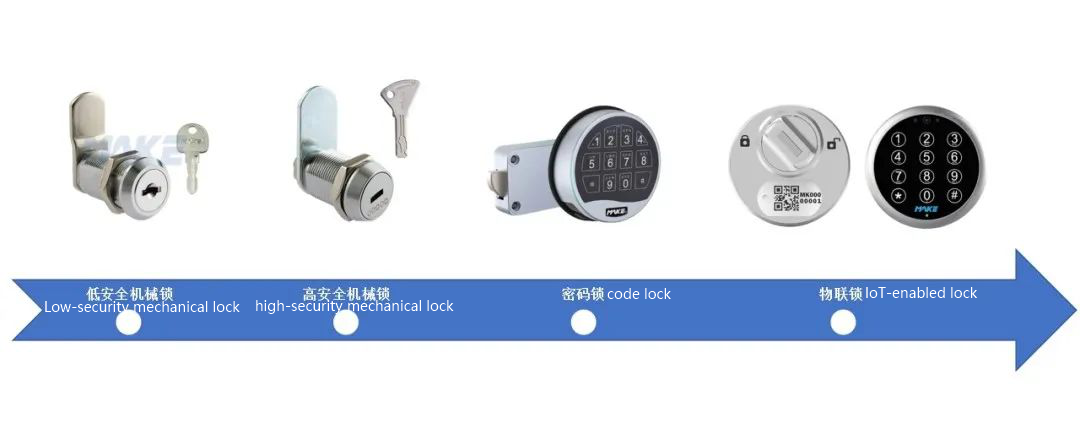
Key flagship products include:
M1 Mechanical Lock: Certified by the Ministry of Public Security with a Class C security rating, ensuring robust physical protection for cash vaults and ATMs.
MK-E310 Keypad Lock: Designed to resist brute-force entry and tampering; adds a layer of electronic authentication.
MK-E312 Palm Vein Recognition Lock: Incorporates biometric palm vein scanning technology to allow secure, contactless unlocking, enhancing both safety and convenience.
M5 Passive Lock & MK-E280 Bluetooth Lock: These support RFID, Bluetooth, and centralized management via IoT platforms for modern smart branch usage.
MAKE’s trajectory in financial terminals reflects the industry’s shift from "security first" to "security + convenience," and now to "security + convenience + real-time smart management." Through continuous innovation, MAKE provides banks and financial enterprises with a full range of secure and intelligent locking solutions, empowering greater operational efficiency.

ATM
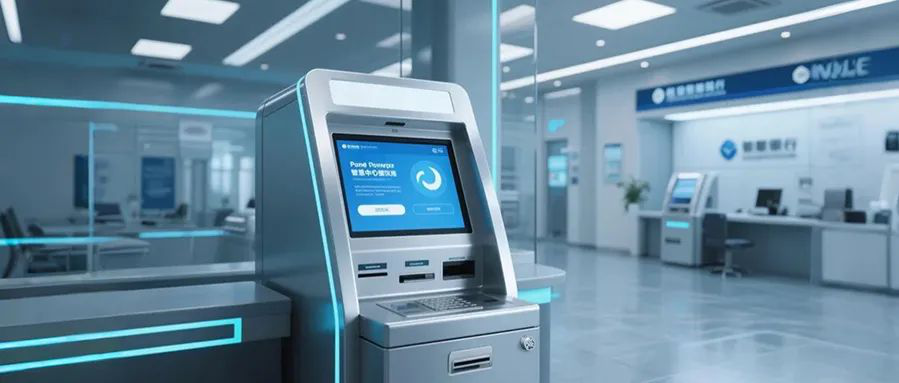
Smart Teller Machine (STM)

Safety Deposit Box
The trend toward automation and self-service has resulted in massive growth of public terminals across retail, transportation, logistics, and healthcare. MAKE recognized this shift early and has successively developed a broad range of locking systems tailored for self-service applications.
Their portfolio includes:
Traditional vending machine locks
Spring-loaded locks
Electromagnetic locks
Electric strike locks
Passive (keyless) locks
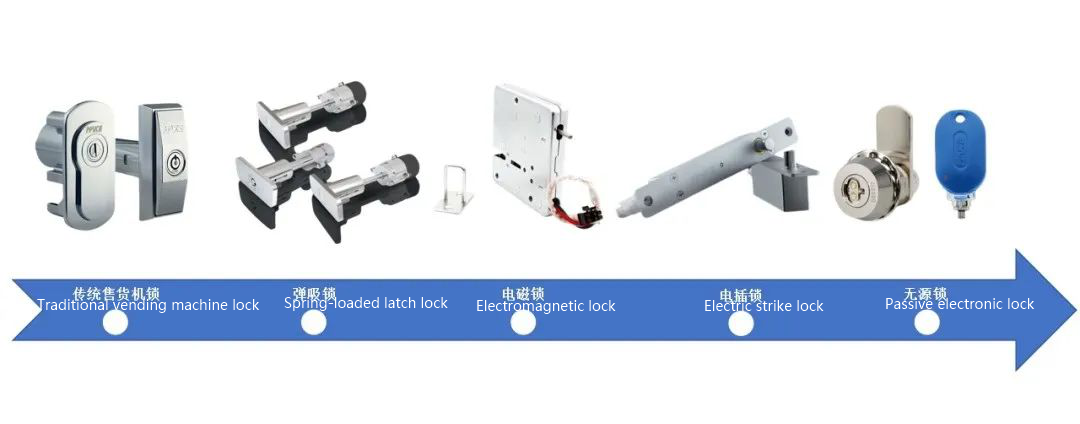
Among these, two stand out as milestone products:
MK221 Spring-Loaded Lock: Integrates spring mechanisms with intelligent control modules, enabling multiple unlocking methods (key, card, or digital command). Ideal for multi-function kiosks and outdoor vending machines.
MK-E225 Passive Lock: Supports Bluetooth or RFID unlocking, allows administrators to authorize access remotely, and uploads all unlocking records to a management platform in real time, forming a closed-loop traceable management system.
Compared to traditional key-only locks, MAKE’s newer self-service terminal locks have evolved in three key ways:
From single unlocking method to multi-mode unlocking (key + code + smartphone + biometric).
From basic mechanical protection to digital protection with built-in alarms that alert on abnormal access.
From untraceable management to cloud-based platforms where operations are logged, monitored, and audited.
This provides tremendous value for operators who manage large fleets of terminals across cities or countries. They can issue or revoke permissions remotely, schedule maintenance, track access history, and improve accountability—all while ensuring the fundamental physical security of their machines.
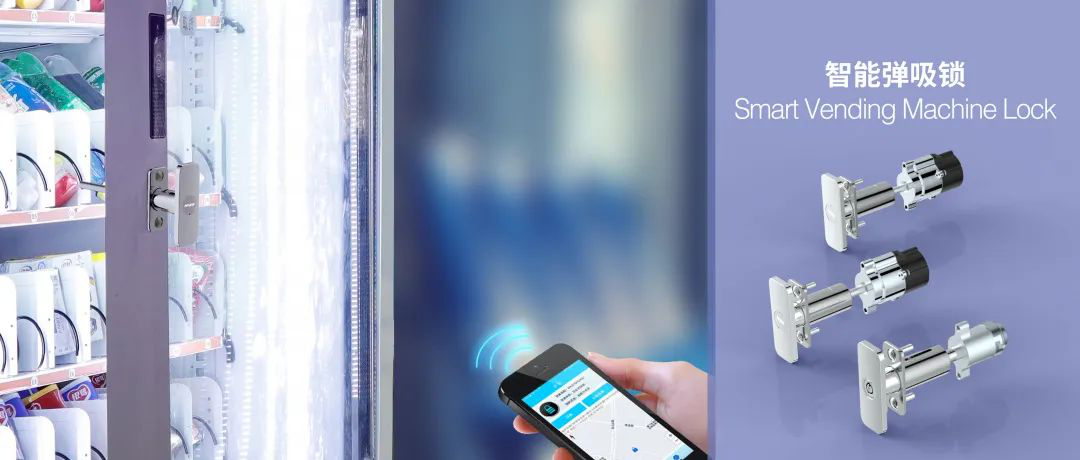
Self-service Vending Machine
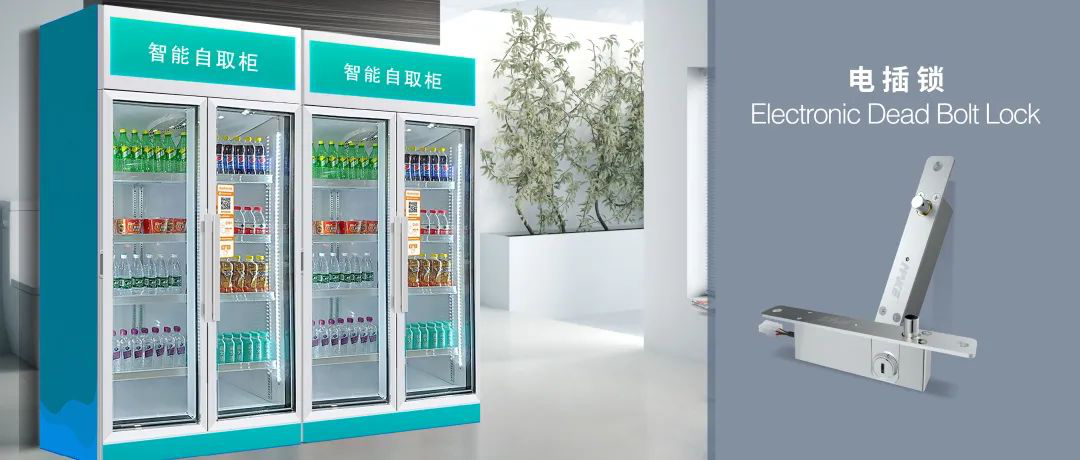
Access Cabinet / Secure Access Locker

Compartment Locker / Modular Storage Cabinet
The year 2020 marked a fundamental transition for the smart terminal ecosystem—from a single-point intelligence model to a collaborative intelligence model. Smart terminals started to become part of a larger digital system where information is shared, decisions are automated, and devices communicate with one another autonomously.
MAKE embraced this opportunity by embedding IoT modules and smart chips into its locks, allowing them not only to secure devices but to collect, transmit, and analyze data. For manufacturers and operators of smart terminals, this means MAKE’s locks are no longer just security components—they are intelligent endpoints in a connected digital infrastructure.
Looking ahead, MAKE plans to further enhance its smart terminal product lines through:
Integration of AI and biometric algorithms for faster and more accurate authentication
Development of IoT-enabled security modules that can connect with wider industrial cloud platforms
Offering SaaS-based management platforms that allow real-time remote control and analytics
Upgrading lock firmware and software systems to support predictive maintenance and multi-layer encryption
Collaborating with terminal equipment makers to build holistic functional modules combining physical protection with data management
In financial terminals, future products will likely include facial recognition locks, centralized bank control platforms, and predictive alerts to detect unauthorized access. In the field of self-service terminals, MAKE may introduce smart locks that collaborate with route planning algorithms, logistics systems, or user behavior data to recommend restocking schedules or predict abnormal access risks.
The ultimate goal is to create intelligent locking systems that can not only secure devices, but also enable a more efficient, safe, and transparent operation for operators, integrators, and end users alike.
Over the past 20 years, the smart terminal industry has rapidly evolved from basic data processing devices to sophisticated, interconnected intelligent systems. Each phase—from computational intelligence to applied intelligence, single-point intelligence, and now collaborative intelligence—has brought new demands and opportunities.
MAKE has consistently seized these opportunities by delivering innovative locking systems tailored to the developing needs of financial and self-service terminals. From mechanical locks to IoT-enabled security solutions, MAKE remains at the forefront of smart terminal security technology.
As the industry continues to progress toward deeper integration of humans, machines, data, and environments, MAKE will continue to explore new technologies, upgrade its product ecosystem, and provide next-generation intelligent security solutions for terminal equipment manufacturers around the world.
By staying committed to innovation, reliability, and intelligent integration, MAKE is poised to become a long-term leader in the future of smart terminal security.
